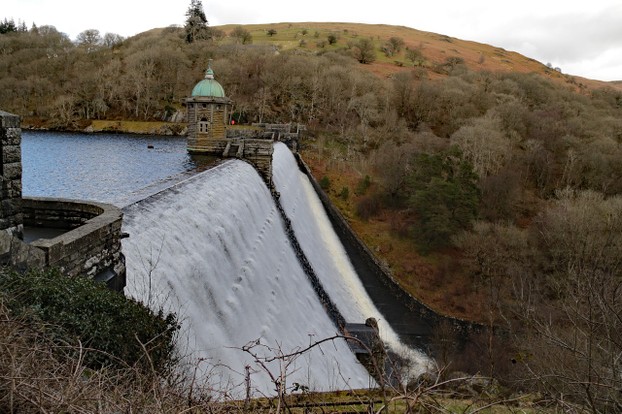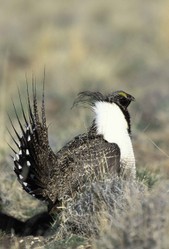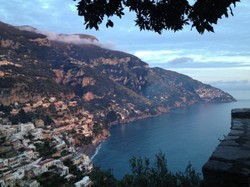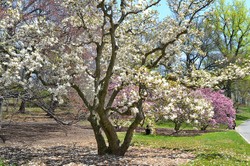Elenydd is sometimes known as the Green Desert of Wales,a description that came from the eighteenth century traveller George Borrow, who was commenting upon the sparsity of habitation in the area. However, the word desert is misleading,for the land is green and much of it is fertile,being used for sheep rearing, forestry and more recently for tourism. It is a land of small villages and isolated farmsteads, spread across a range of mountains that is not Wales' highest, but whose distinction is that it is a range central to Welsh geography. The Cambrian Mountains,of which Elenydd is a part, are the watershed of Wales, with important rivers flowing east and westwards from their rainy heart. Britain's longest river,the Severn flows eastards down from this heartland, as do the scenic Wye, the Irfon and in a westerly direction the Rheidol and the Teifi, one of the few rivers on which you can still see coracles, traditional Welsh boats, and the Elan, from which Elenydd might draw it name.
I would say that while in Permaculture terms zone 5 is wilderness, much of the land in the Elan Valley is zone 3-4, which is sheep range and small woodlands. While Elenydd is quiet, it is not a wilderness like parts of Scotland are, at least not in this part.
The river Elan surges westwards down to the Irish Sea. Never a long river, its waters have the vivacity of youth, and the word Elan is apt, for it is the Welsh word for deer, and the river's spritely coursing at places reminds us of a deer's leaping. The land takes its name from the river, the land of the deer, and we are reminded of the ancient deer goddess, Elen of the Ways, the horned lady of the deer and mistress of the intricate paths of the underworld, a deity all but forgotten in our age, except for a few pagans, who have revived her worship.
The Elan Valley is popular with tourists, though it is well damned and partly flooded nowadays resulting in the drowning of several villages. The process sounds harsh, but the giant English city of Birmingham and other cities in South Wales needed water, and this need was urgent. Walkers now enjoy the quiet, even silence of the valley. Some farms survive on the higher slopes of the valley, and there are places to stay,such as guest houses and hostels for walkers, sometimes known as wilderness hostels. The presence of so much water exerts a calming influence upon the mind, making this a good place to walk.The Elan Valley is a great place for quiet walking.
The Elan estate is seventy square miles and contains eighty miles of tracks for walkers and cyclists. Off the tracks the land is tussocky to walk on, especially as you go up hill, and walkers should be aware that some walks are tough. There is, however, a disused railway line converted into a walking and cycle path, and this is popular with visitors.










 Pilgrimage. A review27 days ago
Pilgrimage. A review27 days ago
 Leo the Fourteenthon 05/09/2025
Leo the Fourteenthon 05/09/2025
 The Melsonby Hoardon 03/25/2025
The Melsonby Hoardon 03/25/2025



Comments
The British Isles deer population feeds like the American deer population.
Thank you for your comment below in answer to my previous observation and question.
Unitedstatesian deer feed at any time of the day or night where their food source is stretched bit by bit over quite a distance or where there is light pollution or both.
Is the British-Isles deer population diurnal, nocturnal or both?
There is no special stage in a deer's life associated with the area. I think that lean might be an ancient word for deer that came to mean faun
English Wikipedia equates Elenydd with elain -ydd, "fawn territory."
Is the area known for a special young stage of a special deer genus?
Mayflies and other similar flies are found. The quintessential fish are trout, voles were known, but due to mink, either escaped from fur farms or freed by animal rights activists, are now rare.
Thank you, Frank.
Turloughs definitely call up seasonal, vernal pools over here, but without the obligate limestone setting, according to Wikipedia and other internet sources. Their vegetation entail many of the same-sounding populations, such as buttercups, knotgrasses, mints, mosses, orchids, pondweeds, rues, sedges and watercresses.
Chalk streams intrigue me since they are somewhat inaccessible and rare here. Fred Pearce, in his article The Threat to Chalk Streams, Our Unique Contribution to Global Economy for The Guardian July 24, 2014, mentions England as claiming 160 of 210 chalk streams worldwide. What would be the signature animals and plants?
Thanks Derdriu.
On this side of the pond the nearest feature to a vernal pool is a turlough, a fluctuating pool in limestone country. Turloughs are found in the West of Ireland.
We have suffered occasional drying up of chalk streams, which are a rare form of habitat found in southern Britain. This is due to over-extraction from the aquifers that feed them.
Vernal pools are ephemeral pools that lack permanent fish populations and suffer periodic drying-up. They have signature animals and plants that vary geographically. Here, they interest American toads; bullfrogs, gray treefrogs, chorus, green, leopard, pickerel and wood frogs and spring peepers; caddisflies, fairy shrimp, fireflies, skimmer dragonflies and spreadwing damselflies; eastern painted turtles; five-lined skinks; and Jefferson, marbled and spotted salamanders.
In particular, I love such signature vegetation as poison ivy-fighting jewelweed and wild blackberries, mulberries, strawberries and wineberries.
So it all makes quite a light and sound show, what with barn owls, blue jays, bluebirds, chipping sparrows, mourning doves, nightjars, ovenbirds, robins and warblers.
Would that sound like anything on your side of the pond?
The underworld was not seen negatively by people who revered caves as sacred, liminal spaces.
Plyn is an anglicization of pum, which means five. Limmon comes from the Welsh word for beacon and is found in the Scottish Ben Lomond, which means Beacon Mountain.
Nightjars are rare over here, and I have never seen one. You are fortunate.
What is the Vernal Pool. I know that Vernal means spring,.
frankbeswick, Thank you for the participation in the Green Desert perambulation, the practicalities and the products.
There are some interesting articles about Elen of the Ways online. They describe her positively. So is the underworld association not a negative?
Among my favorite parts of the tour is the avian chorus. Nightjars live around me; they make such a wonderful chorus, with chipping sparrows, frogs, toads and warblers. A couple of years ago, I was honored and privileged to be walking through the grasses around the vernal pool and wound up face-to-face with a proud nightjar parent and nest of eggs.
If plyn and pum respectively mean lead and five, what would limmon mean?